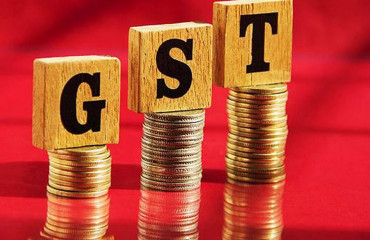
Every year, when the government releases the goods and services tax (GST) collection figures for April, they are touted as a ‘record high' or the ‘highest ever’. Technically, they are—but that's not the full story.
Every year, when the government releases the goods and services tax (GST) collection figures for April, they are touted as a 'record high' or the 'highest ever'. Technically, they are—but that's not the full story.
April GST figures are a seasonal quirk, boosted by the year-end push, and not a barometer of steady consumption growth, as collections normalise the following month. This, along with declining GST buoyancy and slower net revenue growth, indicates a less-than-encouraging trend.
A Mint analysis of GST data shows collections spike every April. With the impact of rising prices also reflected in the collections, the April figure usually marks a record high up to that point— ₹2.37 trillion was a record high in April 2025, as was ₹2.10 trillion in April 2024.
The reason for the spike is that the April figures, which reflect transactions that took place in March, are boosted by higher year-end economic activity as well as reconciliation and compliance processes.
Also read: Games24x7 lays off staff as Supreme Court hears 28% GST case
These recurring April spikes, observed since the early years of the GST regime, are often celebrated as milestones. However, they do not reflect a sustained trend: the April figure for each year is not surpassed by collections in any of the following months. For example, from ₹2.1 trillion in April 2024, average collections stood at ₹1.82 trillion between May 2024 and March 2025.
GST collections growth slower than GDP growth
While April figures grab eyeballs, the full-year data suggests a slower rise in collections relative to India's economic growth. GST collections, in absolute terms at current prices, rose from ₹12.2 trillion in FY20 to ₹22.1 trillion in FY25. While this was driven by a nearly 34% year-on-year rise in FY22 and a 21% rise in FY23, high wholesale inflation (13% in FY22 and 9.4% in FY23) was partly responsible. Growth rates have declined in the past two years, given the normalisation in wholesale inflation.
However, the fact that GST collection growth is now slower than GDP growth is a worrying trend. GST buoyancy (the ratio of tax growth to nominal GDP growth) has been declining since hitting 1.64 in FY22. In fact in FY24 and FY25, GST buoyancy fell below 1, showing that GST collections were not keeping pace with economic growth. In comparison, overall tax collections have been about 1.1 in the past two years, underlining the weakness in the consumption tax.
Also read: Chartering the troubled waters of accommodation services under GST
Glaring gap in gross and net collections
While gross GST collections have become a key indicator to track the momentum of consumption and economic activity in the country, the government began providing details of refunds and net revenues only last year, after facing criticism from experts.
Net revenue, after adjusting gross tax collections for refunds, is the amount that goes into the government's kitty and can shape its priorities. An analysis of data from recent months, in which detailed information on net revenues is available, paints a gloomier picture. The growth in net GST revenue has been slower than the rise in gross collections more often than not.
In April 2025, while gross GST collections rose 12.6% year-on-year—the highest growth rate since November 2023—net revenue growth was significantly lower at 9.1%. Monthly GST figures can be volatile, but full-year data shows a similar trend. According to data released by the government for March, growth in net GST revenue was 8.6% in FY25, lower than the 9.4% increase in gross GST collections for the same period.
Also read | Navigating GST registration hurdles: What freelancers and small businesses should know
